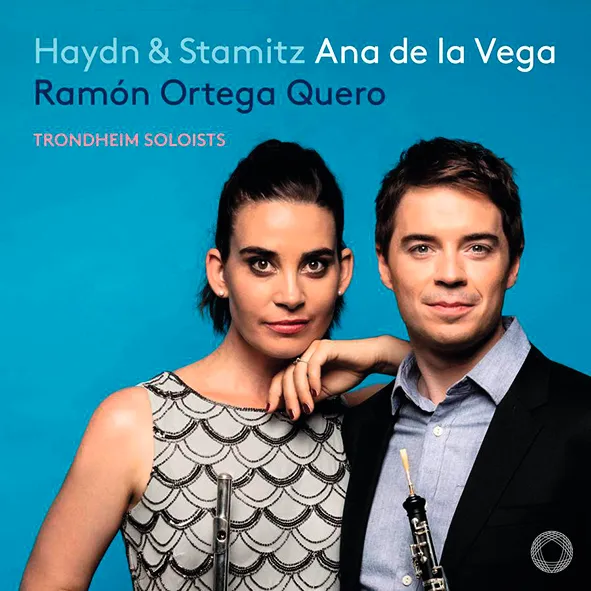
Haydn • Stamitz Haydn: Flute and Oboe Concerto No. 1 in C major, Hob. VIIh: 1; Flute and Oboe Concerto No. 3 in G major, Hob. VIIh: 3; Stamitz: Flute and Oboe Concerto in G major; Flute Concerto in D major Ana de la Vega (flute), Ramón Ortega Quero (oboe); Trondheim Soloists Pentatone PTC 5186 823 64.38 mins
The Lira Organizzata was a curious 18th-century keyboard contraption combining a hand-cranked hurdy-gurdy with a rank of small organ pipes. Although wheezy in tone and limited in the range of tonalities it could encompass, it was the favourite instrument of King Ferdinand IV of Naples, who played the thing himself and in 1786 commissioned Haydn to supply a set of concertos for Lira duet and chamber orchestra. Far from discouraged by the oddity of the task, Haydn came up with a series of divertimento-like miniature three-movement concertante symphonies, surprising and inventive enough to recycle material from in later works – the Romance movement of the G major Concerto proves to be a pre-run of the slow movement of his ‘Military’ Symphony No. 100.
But he also made sure that, given the less-than universal availability of Lira Organizzatas, the solo parts could be played by flute and oboe, as they are here with bright elegance by Ana de la Vega and Ramón Ortega Quero, with the crisp horns, strings and continuo of the Trondheim Soloists, lead by Geir Inge Lotsberg. Equally deft are the accounts of the two concertos by Carl Stamitz, vastly prolific son of pioneering Mannheim symphonist Johann Stamitz. Carl’s style, however, is closer to early Mozart, with the same fluent command of the galante conventions of the day, if less memorable in ideas and with a certain reluctance to stray far from the home key. Still, spaciously recorded, these lively and charming pieces should give pleasure.
Read more of our reviews of the latest Haydn recordings here
Find out more about Haydn and his work here
Bayan Northcott